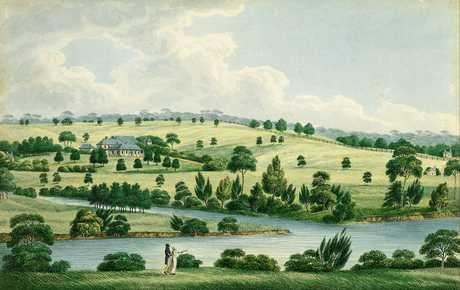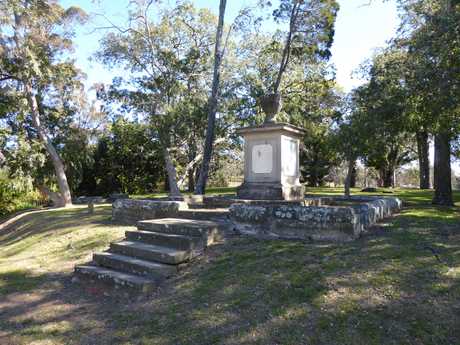6 funeral notice wording examples for parents
Writing a funeral notice for your parents can be a difficult task. Read 6 funeral notice wording...

It was the Second Fleet sailing to the newly established colony of New South Wales that brought a young married woman with her husband and young son, having lost a baby girl on the voyage, to the far reaches of British colonisation. Her name at birth was Elizabeth Veale, born to Richard and Grace, farmers of some education and affluence from Devon in England.
Elizabeth went on to marry John Macarthur in October 1788 and after he joined the New South Wales Corps, they took up their position in the burgeoning colony to face the extreme difficulties that came with the early years of Australia.

The life of the Macarthurs mixed with officers of the NSW Corps, naval officers and members of the colonial administration. They were quick to obtain land, being granted 100 acres near Parramatta in 1793, where they would build their estate and name it Elizabeth Farm. The house was considered a 'very excellent brick building' and in later years was a necessary excursion destination for 20th century Sydney school children.
In 1794 John showed an interest in raising sheep and began to selectively crossbreed his flock at Elizabeth Farm using merinos. During this time, Elizabeth carried out her duties as mother and housekeeper. After arriving in the colony, the Macarthur family grew to five sons and three daughters and Elizabeth ensured each of them received a well-rounded education with order and harmony prevailing. This was in contrast to the public life of John who rallied against various governors, resulting in a duel with Colonel Patterson who was injured in the shoulder. John was sent back to England in 1801 by Governor King to face trial for the action.

While back in England, John took specimens of the Merino wool, both pure and the best of his cross breeds, where experts reported the quality equal to any Spanish wool, from where the merino had originated. As John promoted the wool in England, Elizabeth continued to care for the merino flocks. John arrived back in the colony in 1805, bringing with him additional sheep to add to his flocks and permission to obtain more land, which he took up south-west of where Sydney is today, and called it Camden Park Estate.
It wasn't long before John was in trouble again, with his superiors having a role in the Rum Rebellion and the attempt to overthrow Governor Bligh in 1808. He was sent back to England and would stay there for the next eight years. During this time, Elizabeth ran both Elizabeth Farm and Camden Park Estate, visiting this location regularly despite it being located at the limits of the known colonial world. She would discuss the choice of rams, sales of sheep and the improvement of fleeces with convict overseers and write reports back to John in England. When he wrote back, she would follow his directions for the flocks' continued development.
Elizabeth's expert ability to manage the sheep ensured their competitive place in the British wool market and established the reputation of the colony for wool-growing. While John's vision was a driving force, Elizabeth's determination and administrative ability can't be overlooked. A woman running a business, while still raising her large family, in a strange and unknown land that would have thrown up all sorts of obstacles, without the close support of her husband, was a unique feature for the time.
Elizabeth Macarthur was a unique woman, and while her active role in the business stopped when John returned in 1817, her influence was still very powerful. As the family fortunes flourished, John worked at building a mansion on the Camden estate. Cracks started appearing in their relationship, however, when John's moods turned melancholic and obsessive over his belief that she had been unfaithful to him during his absence. His unfounded beliefs became so strong, the couple lived in virtual separation until his death in 1834.
Elizabeth continued to live another 16 years and saw the final success of Australian wool exports in the mid-1830s and the fulfilment of every one of John's predictions concerning the economic development of the colony. Today, her legacy can be seen through the Elizabeth Macarthur Agricultural Institute located at Camden Park, the largest Centre of Excellence run by the NSW Department of Primary Industries
Elizabeth is buried in the family tomb, alongside John and her oldest daughter Elizabeth at the Macarthur family graveyard opposite the family home at Camden Park House.

Tales From The Grave - Uncovering family history from down under By Samantha Elley.
Sources: